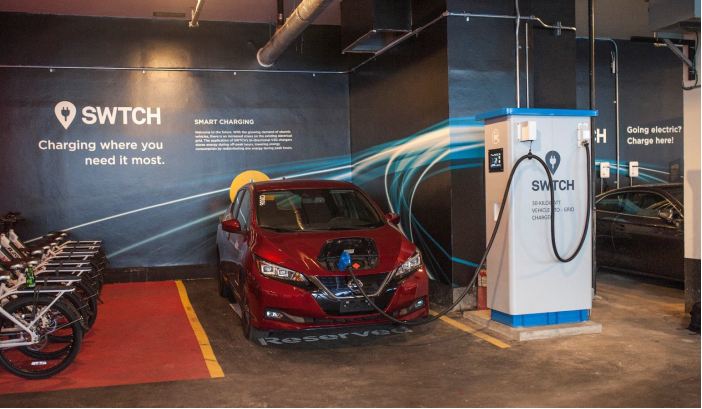Decreasing Transactional EV Charging Costs and Enhancing Grid Efficiency
Strategic Area
Electric Vehicle Infrastructure Demonstrations
Status
Completed
Partners
Opus One Solutions
IBI Group
PowerCharge
Toronto Hydro
University of Toronto
University of Waterloo
Fund
Green Infrastructure
Year
2018
GI Contribution
$1,000,000
Project Total
$2,624,100
Location
Toronto, ON
Find out more
Lead Proponent
SWTCH Energy Inc.
Project Background
The objective of this project was to address barriers to electric vehicle (EV) adoption by demonstrating a blockchain-based EV charging management platform that aimed to reduce the cost of EV charging transactions and enhance grid efficiency. This was accomplished through integration with transactive energy (TE) networks (energy saving) that leverage EVs as distributed energy resource (DER) assets using vehicle-to-grid (V2G) bi-directional charging and blockchain technologies.
The project included deploying V2G DCFC chargers, networking equipment, level 2 chargers, system integrations and blockchain technology in downtown Toronto condominium(s) at 55 St. Claire St. and 275 Albany Ave. to demonstrate the technical feasibility and commercial viability of the combined technologies.
Results
The project demonstrated that V2G technology proves to be operationally reliable and capable of delivering grid services. The quality of the services was found to be influenced by battery temperature, hardware idle consumption, V2G charger inverter capability and EV battery reserve.
While blockchain technology proved to be computationally efficient at scale, when balanced with the operational cost to manage blockchain infrastructure, the incremental savings in transaction fees due to blockchain technology was insignificant compared to the savings that EVs offer versus traditional gas-powered cars. Therefore, the savings of blockchain technology would not improve overall EV adoption.

A red Nissan Leaf parked backed into an underground reserved parking spot for electric vehicles and plugged into a SWTCH 30-kilowatt vehicle-to-grid charger.
Benefits to Canada
The project proved the technical feasibility of V2G and grid services in residential places. This paves the way and sets the technology foundation for other commercial projects like demand response programs that utilities may offer in the future.
The project streamlined how to deploy network hardware, and how to deal with complex existing building electrical infrastructure, resulting in reduced cost of future EV charging station deployment in multi-unit residential buildings (MURBs).
Next Steps
There is no follow-on project.
Page details
- Date modified: